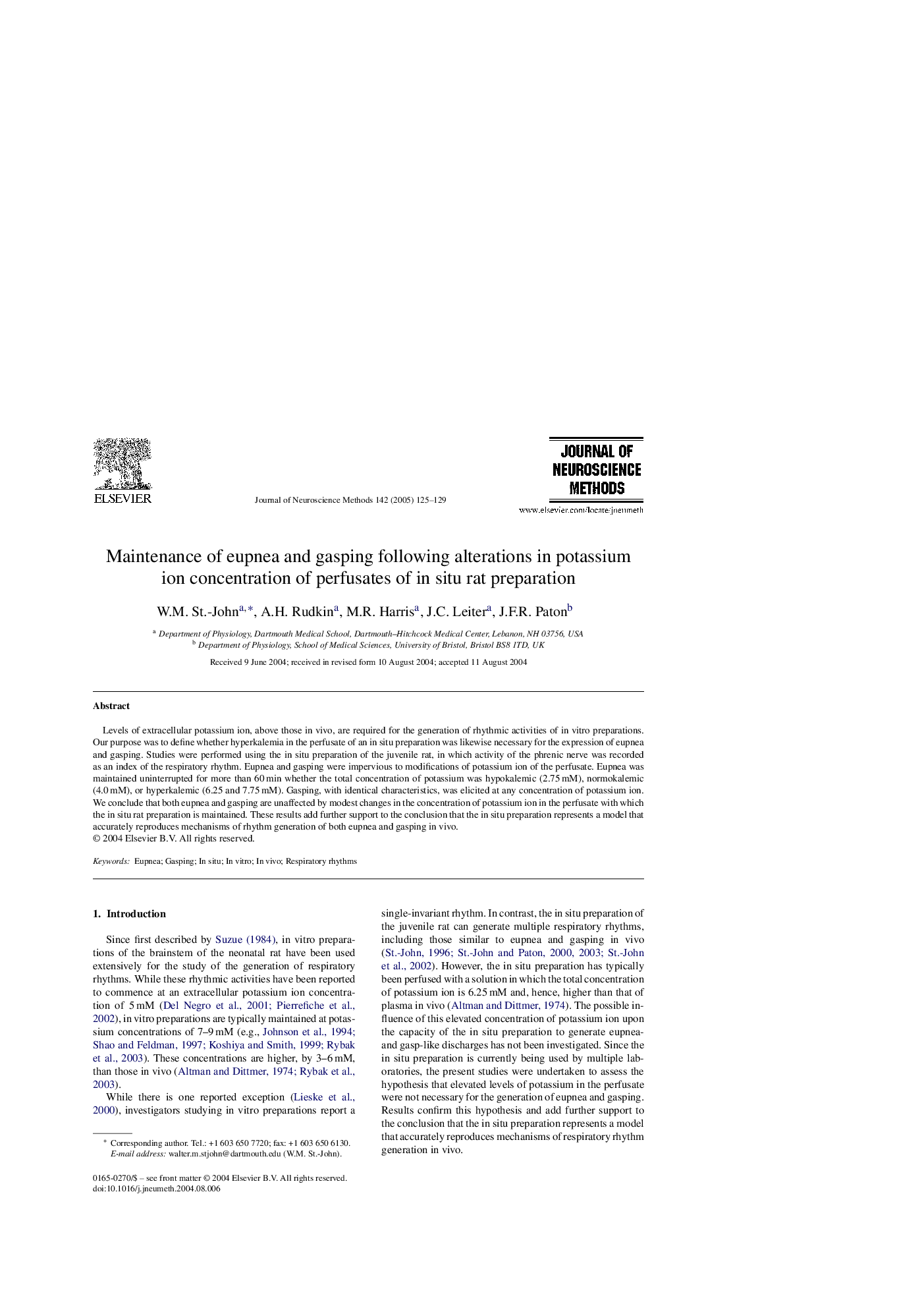| Article ID | Journal | Published Year | Pages | File Type |
|---|---|---|---|---|
| 9424185 | Journal of Neuroscience Methods | 2005 | 5 Pages |
Abstract
Levels of extracellular potassium ion, above those in vivo, are required for the generation of rhythmic activities of in vitro preparations. Our purpose was to define whether hyperkalemia in the perfusate of an in situ preparation was likewise necessary for the expression of eupnea and gasping. Studies were performed using the in situ preparation of the juvenile rat, in which activity of the phrenic nerve was recorded as an index of the respiratory rhythm. Eupnea and gasping were impervious to modifications of potassium ion of the perfusate. Eupnea was maintained uninterrupted for more than 60Â min whether the total concentration of potassium was hypokalemic (2.75Â mM), normokalemic (4.0Â mM), or hyperkalemic (6.25 and 7.75Â mM). Gasping, with identical characteristics, was elicited at any concentration of potassium ion. We conclude that both eupnea and gasping are unaffected by modest changes in the concentration of potassium ion in the perfusate with which the in situ rat preparation is maintained. These results add further support to the conclusion that the in situ preparation represents a model that accurately reproduces mechanisms of rhythm generation of both eupnea and gasping in vivo.
Related Topics
Life Sciences
Neuroscience
Neuroscience (General)
Authors
W.M. St.-John, A.H. Rudkin, M.R. Harris, J.C. Leiter, J.F.R. Paton,
